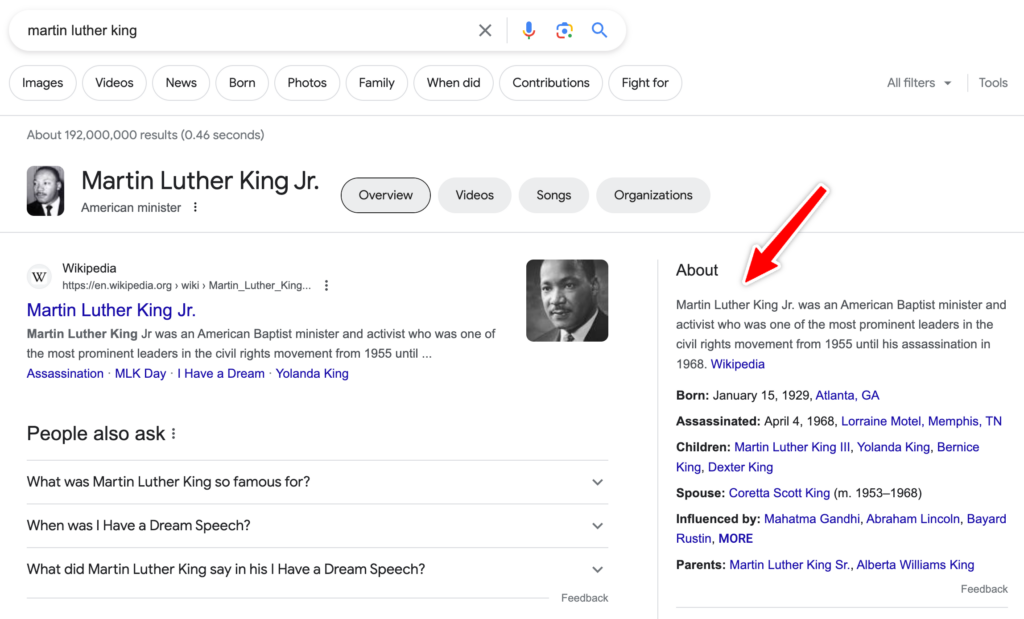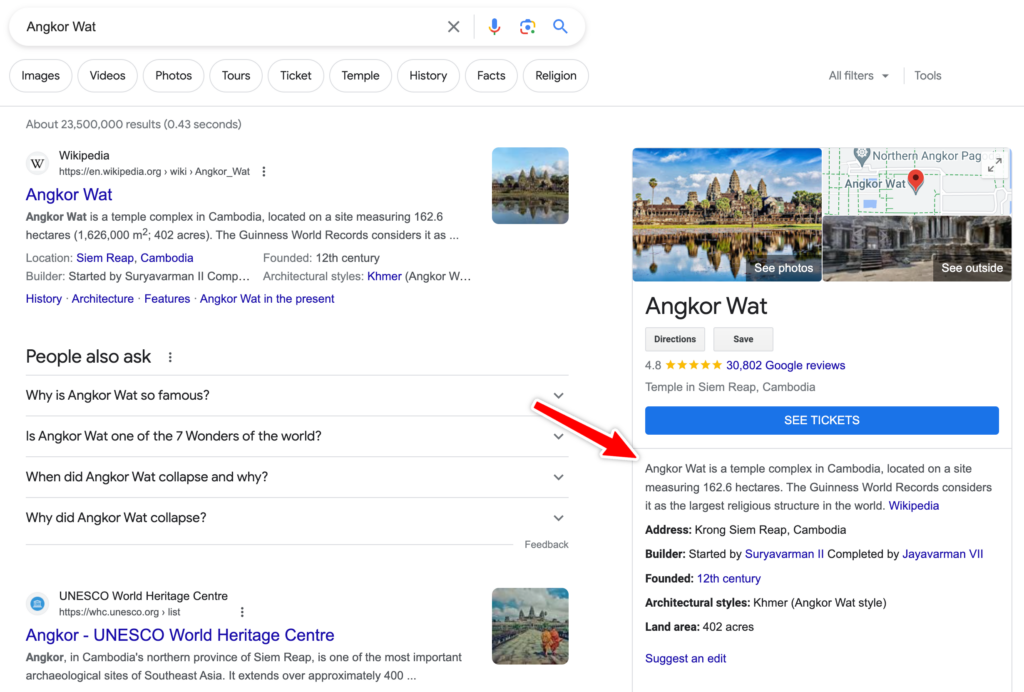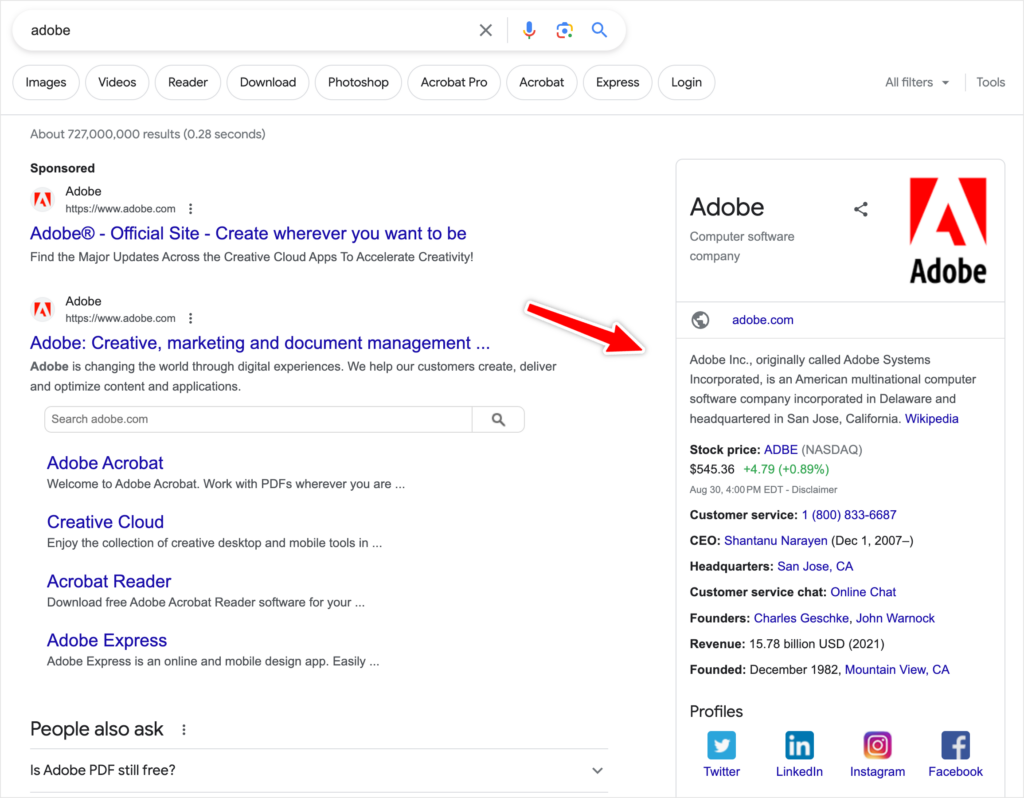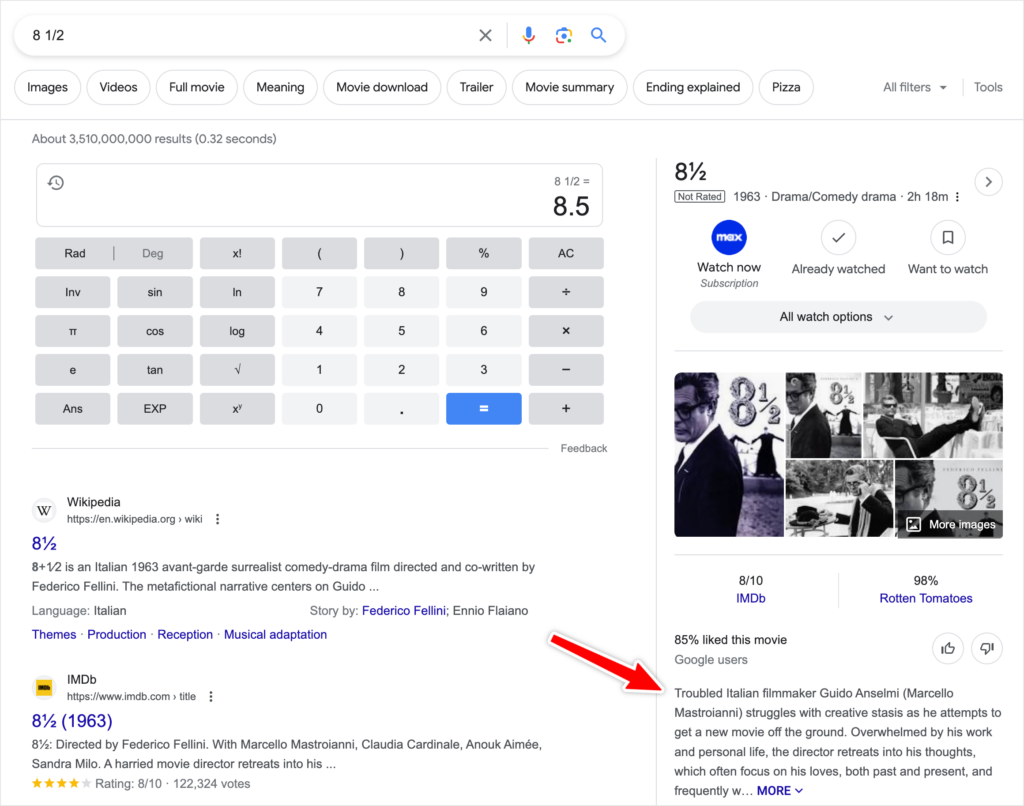Your cart is currently empty!
Google’s Knowledge Graph is a massive database originally released in 2012. It drives knowledge panels, those factual panels on the side of search results.
The term “knowledge graph” isn’t specific to Google and is the name of a data model type. Most of the time, when you’re talking about knowledge graphs in relation to SEO, someone is talking about Google’s version.
This database links together a huge amount of information about different entities and how they relate. Think of it as a network of knowledge, where each node represents a fact, and the threads between them represent connections between these facts.
How does Google’s Knowledge Graph work?
You can see Google’s own explanation, but we’ll break down the main points for you. The data comes from various sources. Google extracts and compiles information from Wikipedia, licensed databases, public domain texts, and even user-contributed data (like from Google Business Profiles for local businesses). Additionally, Google’s own web crawlers pull in information from the broader internet, ensuring the content remains updated.
Gathering Data
Google gathers information from various places across the internet:
- Public sources of factual information. Think Wikipedia and the CIA World Factbook.
- Private sources they have licenses with for things such as sports scores or weather reports.
- Feedback from users in the knowledge panel area of results. This ensures information is corrected and maintained.
Structured Data
Structured data helps Google understand content and its significance. Site owners and content publishers who use factual data can markup their information with this to help Google and other search engines better parse their sites.
Significance of the Knowledge Graph for SEO
Understanding SEO often requires learning not just how search engines rank content, but how they present and structure information. Google’s Knowledge Graph is pivotal in this context. Let’s delve into why it’s important for search results.
Enhancing User Experience
One of Google’s goals is to serve users the most relevant and timely information for their queries. The Knowledge Graph supports this by delivering direct answers and comprehensive overviews about a topic right on the search results page (SERP). For SEO professionals, understanding the kind of information the Knowledge Graph prioritizes can offer insights into what users find valuable.
Boosting Visibility
While traditional blue-link listings are valuable, appearing in the knowledge panel offers a brand unparalleled visibility. It’s essentially a free advertisement right at the top or side of search results. Ensuring your content is accurate, authoritative, and structured in a way that Google can easily interpret can increase the chances of being featured in these prime spots.
Encouraging Rich Interactions
Search results influenced by the Knowledge Graph often include richer details – images, charts, related topics, and more. These rich results can lead to higher click-through rates and more meaningful interactions with users. SEO experts focusing on enhancing their content’s compatibility with the Knowledge Graph can provide users with more interactive and visually appealing search results.
Understanding Semantic Search
The Knowledge Graph is Google’s way of understanding the world, not just as a series of disconnected keywords, but as entities and their interrelationships. This semantic understanding is important for SEO. It means that optimizing for a keyword alone isn’t enough. Content must be contextually relevant, answering not just the direct query, but related questions and topics users might be interested in.
Building Trust and Credibility
Being featured prominently in a knowledge panel, can be seen as a stamp of approval from Google. It signals to users that the content is trustworthy and authoritative. SEO strategies that account for this can significantly boost a brand’s credibility in the eyes of users.
While there aren’t many ways to influence what appears in knowledge panels, any searcher can provide feedback on them and report incorrect information. If you’re lucky enough to appear in a knowledge panel and unlucky enough for it to be wrong, provide feedback and check your own properties to ensure they’re correct.
Understanding Knowledge Panels
Google’s knowledge panels are a significant component of its Knowledge Graph initiative. When you search for entities like people, places, organizations, or even some events, you might notice a box (usually to the right of your search results on desktop and at the top on mobile) that provides a concise and organized summary of key information on the subject.
This box is a knowledge panel, and it’s designed to give users a quick snapshot of the topic they searched for without having to click on any specific result. Here’s an example:
What’s Typically Inside a Knowledge Panel
A knowledge panel typically contains an assortment of relevant details about the searched entity. Some examples:
People
You’ll find birth and death dates, biographical snippets, associated people, and more.

Places
Expect to see maps, brief descriptions, historical data, and relevant points of interest.

Organizations
Information such as founding date, founders, headquarters location, and stock price might appear.

Movies
Release dates, cast or director details, synopsis, and ratings are common.

Beyond these, a panel might also include images, notable quotes, and various other pieces of relevant information.
Bottom Line
Google’s Knowledge Graph connects seemingly infinite data points into a coherent, accessible, and scannable format. This results in knowledge panels, which help users scan factual key information. This saves on a ton of queries and helps organize the web’s info. ?






